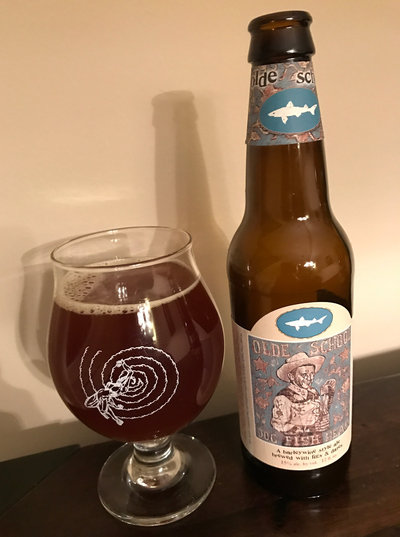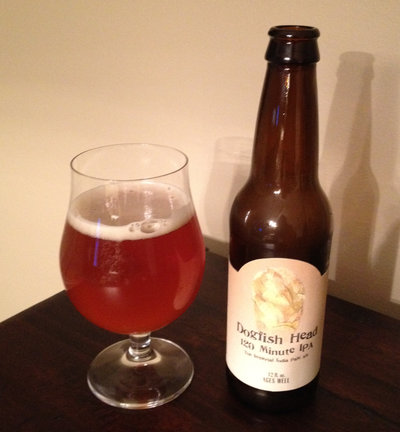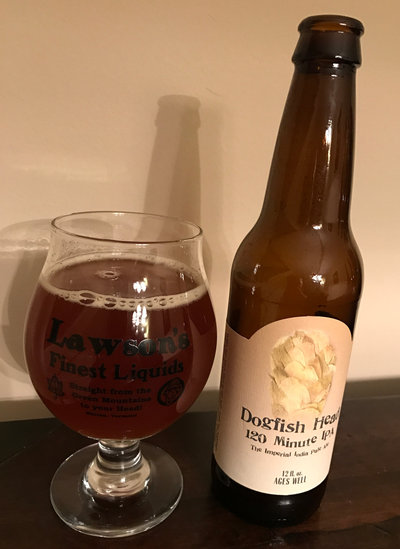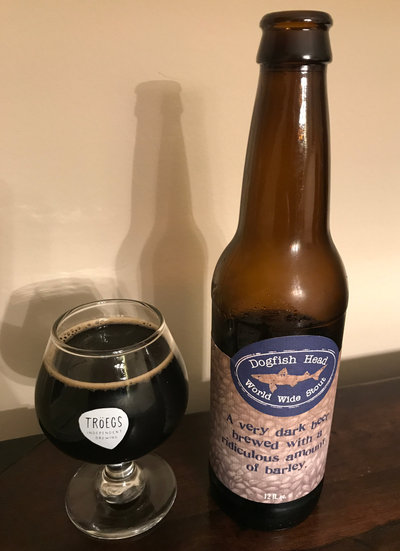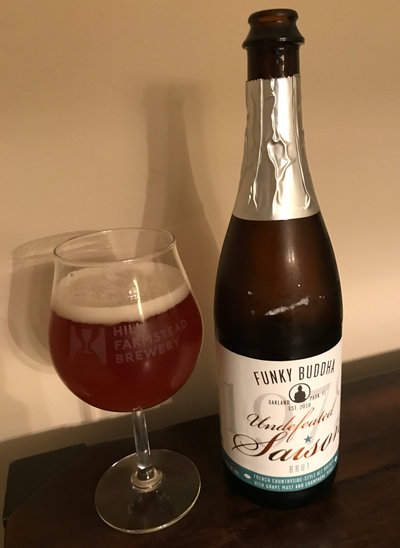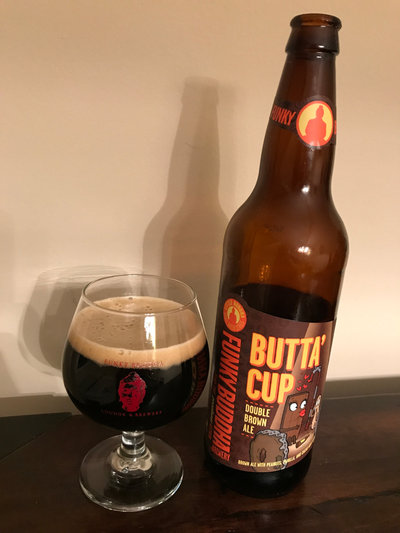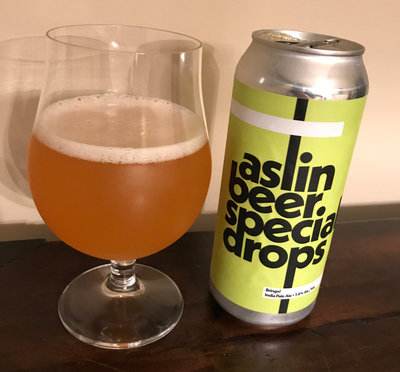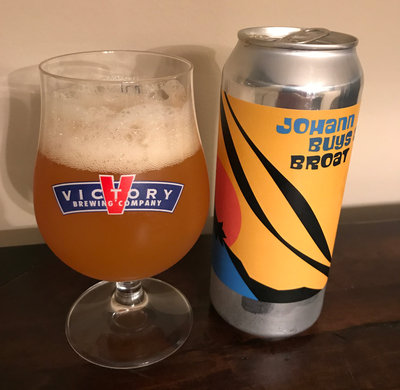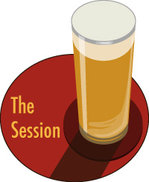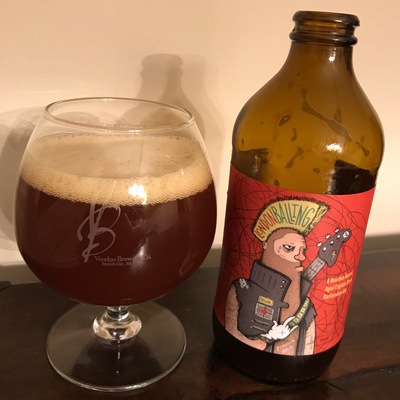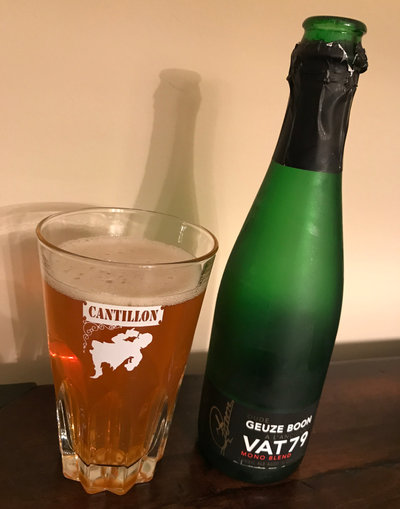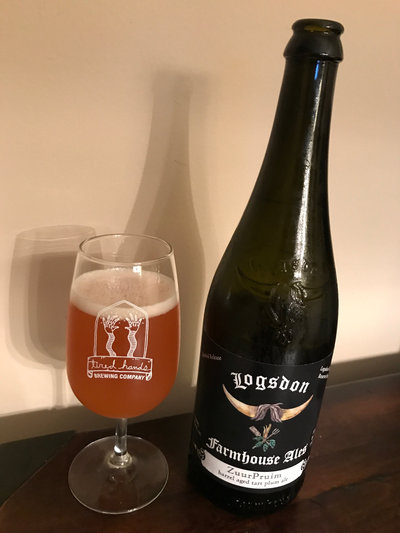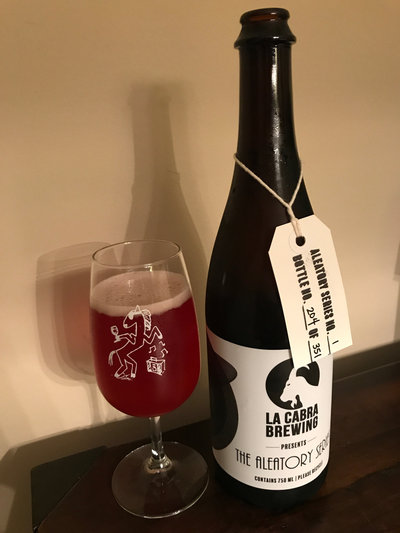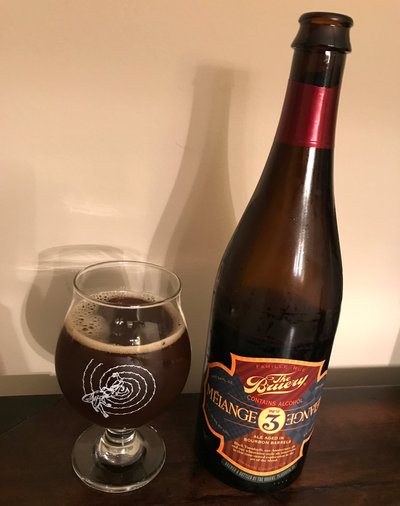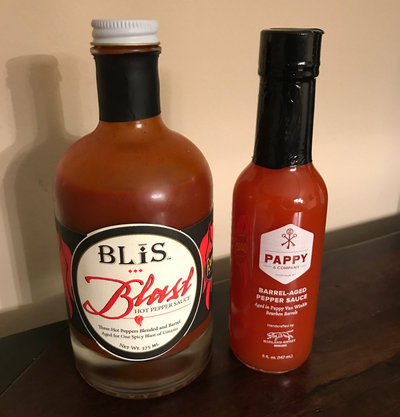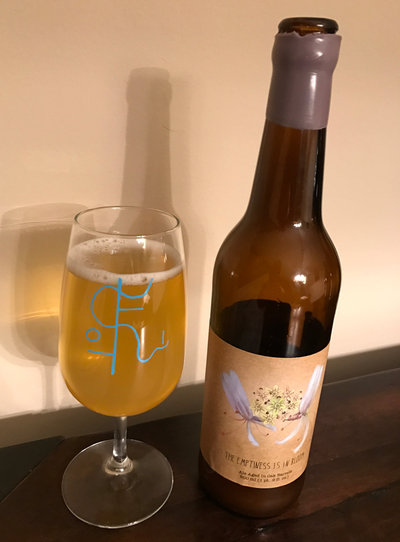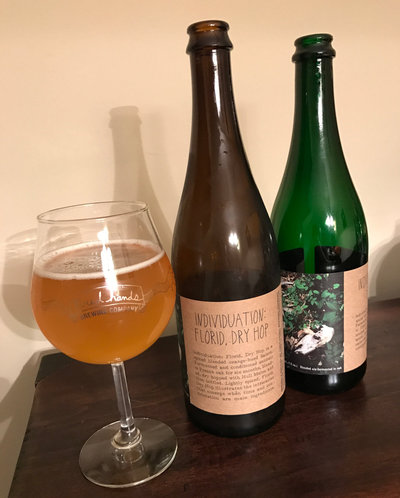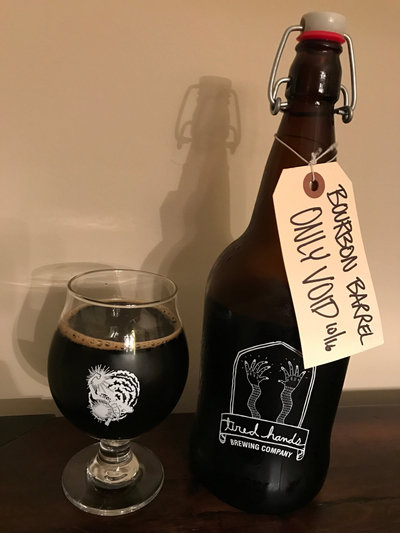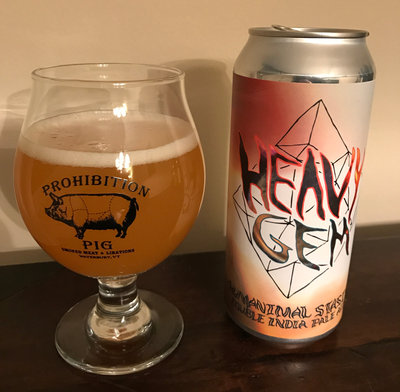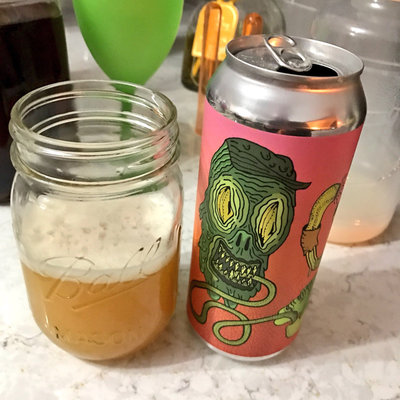Once the darlings of the craft beer community, it seems that Dogfish Head’s fortunes have been on the wane in recent years. Sure, they’re still chugging along and are often the savior of a BMC dominated taplist, but their beers aren’t quite as heralded as they once were. This might be due to the hit-or-miss nature of their sometimes gimmicky approach, or perhaps just plain snobbery. Personally, I tend to enjoy their more “normal” takes on beer, though some of the “off-centered” stuff hits its mark from time to time as well. I had the good fortune to visit the original Rehoboth Beach brewpub last year, and it was a really good time. I had some brewpub exclusives like Porter by Proxy and SeaQuench Ale (now a regular release) that I really enjoyed (and others that were… less successful, like Choc Lobster).
Anyway, I knew that I’d squirreled away a few bottles of Dogfish Head’s more extreme efforts a few years ago, so I lit my torch and made the trek into the deepest, darkest catacombs of my cellar. After fighting off a hoard of mummies and centipede-like creatures, I managed to extricate a few vintage bottles of Dogfish Head from several years of cobwebs and dust.
As per usual, there are two sides of the coin when drinking well-aged beer. On one side, it’s always an interesting and sometimes sublime experience. On the other, while it’s always a different beer than it was fresh, it’s rarely a better beer. I’m happy to report that, in this case at least, Dogfish Head’s wares held up remarkably well. Of course, you’ll also have to note that these are among the more extreme varieties they make in terms of ABV and thus are particularly good candidates for aging. I suspect most of their other offerings would not fare so well. I’ve got some comments about each beer that are incorporated below, so read on, fearless drinker:
Dogfish Head Olde School Barleywine – A barleywine brewed with figs, I always found the label’s “Directions” charming: “Open bottle, pour contents into two snifters. Enjoy. Or: Walk hand-in-neck into the middle of the woods. Use a shovel to dig a 2×2 hole three feet deep. Seal the bottle in a plastic bag. Place in hole & pack with dirt. Memorize location & leave. Return exactly one year later. Dig up bottle, open & enjoy.” Well, I didn’t pack it in dirt and I left it in the catacombs of castle Kaedrin for 5 years instead of just 1, but this still held up pretty well. I’d probably recommend a little less time in the cellar if you’re looking to age your own, but it definitely takes on age gracefully. This is probably one of Dogfish Head’s more underrated beers. This is actually the last beer from Dogfish Head that I did a proper review for, and it’s from 2012… I may need to remedy that, but for now, let’s look at our well aged 4-5 year old bottle.
Pours a very murky brown color with a half finger of off white head. Smells of dark fruits, those figs and prunes, crystal malt, dank resinous hops (typical of aged beers, but it’s a subtle presence here, lending complexity). Taste hits that fruity malt character, rich caramelized figs and prunes, crystal malt, light on the resinous hops, followed by a heaping helping of booze. There’s a little oxidation going on here, but it’s not overwhelming the beer. Mouthfeel is rich and full bodied, lots of boozy heat but nothing unapproachable. A sipper for sure. Overall, this has held up remarkably well. Would try again. B+
Beer Nerd Details: 15% ABV bottled (12 ounces). Drank out of a tulip glass on 2/4/17. Bottled in 2012B.
Dogfish Head 120 Minute IPA – Perhaps Dogfish Head’s most famous beer, it’s one of the few that does seem to still command a devout following. One thing you’ll hear a lot of people say about this beer is that it’s almost undrinkable when fresh, which I’ve always counted as an exaggeration, but I never did manage a well-aged version until new. This has to be one of the most remarkable transformations I’ve ever seen in an aged beer. When fresh, it’s certainly boozy and hot, but it’s got lots of great citrus and pine hop character going on. I liked it. With age, especially once we start talking about 5-6 years, it essentially turns into a malt-forward barleywine. Even just the color of the beer changes dramatically. I managed to dig up a picture from ye olde digital catacombs that shows what it was like with about 6 months on it (you can click to embiggen all the images in this post, but I’m afraid this one isn’t exactly high quality. Please direct complaints to my old cell phone):
And with 6 years on it (these two bottles were from the same 2011B batch), oxidation takes hold and turns this a much darker color:
Whoa. Pours a murky, very dark amber color with a finger of white head. Smells like a malt-forward barleywine, lots of oxidized aromas, a little bit of dank, resinous hops (way different than fresh). Taste is rich and sweet, again, malt forward, more like a barleywine, certainly a little oxidized, a little faded, dank, resinous hops, finishing boozy. Mouthfeel is well carbonated, full bodied, and quite boozy, not as hot as fresh, but plenty of warming sensations as I drink. Overall, I may have kept this just a bit too long, but it’s still quite interesting. I’d like to try one with 3 or so years on it to see how it compares. For now B or B+
Beer Nerd Details: 18% ABV bottled (12 ounces). Drank out of a tulip glass on 2/18/17. Bottled in 2011B.
Dogfish Head World Wide Stout – Of the Dogfish Beers I’ve aged, I’d expect this one to do the best. It ticks all the right checkboxes for the ideal beer-aging candidate: dark malt-focused ale with extremely high alcohol, no flavor additives likely to fade too much over time (i.e. coffee, vanilla, etc…), and so on. This is the sort of beer that drinks pretty hot fresh, but ages considerably well. At 2 years old, it was a really tasty treat. With 5-6 years under its belt, it’s even better. This appears to be one of the few beers that actually does get better over time.
Pours a very dark brown, almost black color with a half finger of tan head that disappears quickly. Smells rich and malty, caramel, dark fruit, even some roast and dark chocolate remaining. Taste is very sweet, caramel, dark fruit, almost port-like character here, again, still a little roast and chocolate. Mouthfeel is rich, full bodied, and chewy, plenty of booze but it does not at all feel like 18%. Overall, this has held up remarkably well, could probably last much longer! A-
Beer Nerd Details: 18% ABV bottled (12 ounces). Drank out of a snifter glass on 5/1/17. Bottled in 2011A.
So there you have it. I’ve depleted my entire supply of Olde School, but I still have a 120 (same vintage) left, and a 2010 WWS slumbering in the cellar. I’m guessing the WWS could take several more years before showing significant degradation, but the 120 should probably be drunk soon (and if I had Olde School, that seems to be at its limit as well). All three of these beers are good for long term aging though, and my recommendation would be to pick up a 4 pack of each, and drink a bottle every 1 or 2 years.
